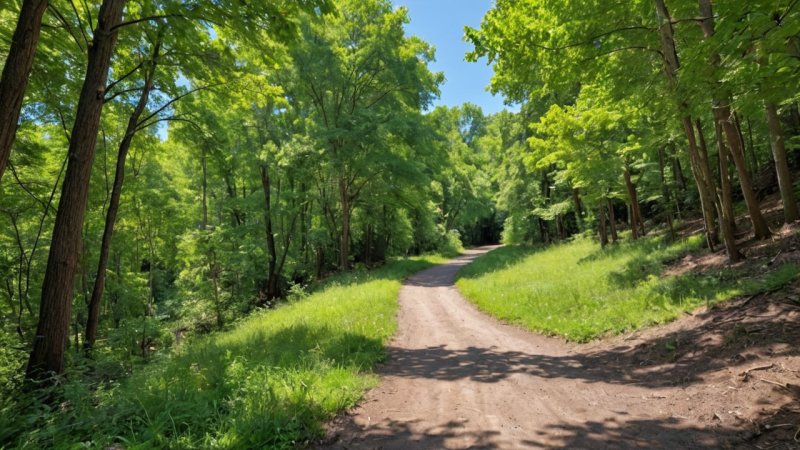Hiking is one of the most rewarding outdoor activities that offers both physical and mental benefits. For those who are just starting out, the array of trails and gear can be overwhelming. This guide will help beginners navigate the best hiking trails suited for novice adventurers and the essential gear needed to ensure a safe and enjoyable experience in the great outdoors. From selecting the right trail to understanding what gear to bring, we’ll cover all the essentials to get you started on your hiking journey.
Understanding Hiking Trails
When it comes to choosing a hiking trail, it's important for beginners to consider factors such as difficulty level, length, and terrain. Here’s a breakdown of how to assess hiking trails:
Difficulty Levels
Hiking trails are typically categorized into three main difficulty levels: easy, moderate, and hard. For beginners, it’s best to stick to easy trails that offer a manageable distance and minimal elevation gain.
- Easy: Generally flat or gently rolling, these trails are perfect for beginners. They typically range from 1 to 3 miles in length.
- Moderate: These trails may have some elevation changes and are suitable for those with a bit more experience. Distances often range from 3 to 6 miles.
- Hard: These trails require a higher level of fitness and experience, featuring steep climbs and challenging terrain. We recommend avoiding these as a beginner.
Trail Length and Terrain
Consider how long you want to hike. Starting with shorter trails (around 2 to 3 miles) allows you to build your stamina. Additionally, pay attention to the terrain. Look for trails that are well-marked and have a smooth, packed surface to reduce the risk of injury.
Top Beginner Hiking Trails
Here are some of the best beginner-friendly hiking trails across the United States:
1. Appalachian Trail (Amicalola Falls to Springer Mountain)
This section of the Appalachian Trail is a fantastic introduction to hiking. It’s about 8.8 miles with a gradual incline, and the views are breathtaking.
2. Yosemite National Park (Mirror Lake Trail)
The Mirror Lake Trail is a flat, 2-mile loop that takes you through beautiful scenery. It’s perfect for beginners looking to experience the beauty of Yosemite.
3. Yellowstone National Park (Mystic Falls Trail)
This 2-mile round trip trail is a great way to see a waterfall and enjoy the unique geothermal features of Yellowstone.
4. Zion National Park (Riverside Walk)
The Riverside Walk is an easy 2.2-mile trail that leads you to the entrance of the famous Narrows. It’s a scenic walk along the Virgin River.
5. Mount Rainier National Park (Trail of the Shadows)
This short 0.7-mile loop trail is suitable for families and offers stunning views of the park’s unique ecosystem.
Essential Gear for Beginners
Once you’ve selected a trail, it’s time to gather the necessary gear. Here’s a list of essential items every beginner hiker should consider:
1. Footwear
Investing in quality hiking shoes or boots is crucial. Look for footwear that provides good support, is waterproof, and has a sturdy grip. Trail running shoes can also be a good option for beginners who prefer a lighter shoe.
2. Clothing
Dress in layers to adapt to changing weather conditions. Here’s what to wear:
- Base Layer: Moisture-wicking shirts that keep sweat away from your body.
- Insulation Layer: A lightweight fleece or down jacket for warmth.
- Outer Layer: A waterproof and windproof jacket to protect against the elements.
3. Backpack
A daypack should be large enough to carry your essentials but not so big that it becomes cumbersome. Look for one with padded shoulder straps and a hip belt for comfort.
4. Hydration
Staying hydrated is crucial while hiking. Carry a reusable water bottle or a hydration bladder that can fit in your backpack.
5. Navigation Tools
Even on well-marked trails, it’s wise to have navigation tools. A physical map and compass, or a GPS device, can help you stay on track.
6. Safety Gear
Always carry a basic first aid kit, a whistle, and a flashlight. A multi-tool can also be handy for minor repairs or adjustments.
Tips for a Successful Hiking Experience
To ensure a positive hiking experience, here are some practical tips:
1. Plan Ahead
Research the trail and check the weather forecast before heading out. Knowing what to expect will help you prepare better.
2. Start Early
Begin your hike early in the day. This allows you to enjoy cooler temperatures and gives you ample daylight to complete your hike.
3. Pace Yourself
Don’t rush. Take your time, enjoy the scenery, and listen to your body. It’s okay to take breaks when needed.
4. Leave No Trace
Adhere to the Leave No Trace principles to minimize your impact on the environment. Pack out what you pack in and stay on marked trails.
5. Hike with a Buddy
It’s always safer and more enjoyable to hike with a friend. If hiking alone, let someone know your plans and expected return time.
Conclusion
Hiking is an accessible and fulfilling way to connect with nature and stay active. By choosing beginner-friendly trails and preparing with the right gear and knowledge, you can enjoy a safe and memorable hiking experience. Remember, the goal is to have fun and appreciate the beauty around you. So lace up your hiking boots, grab your backpack, and hit the trails!






